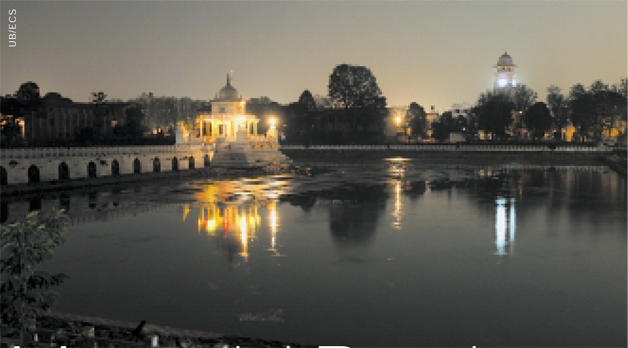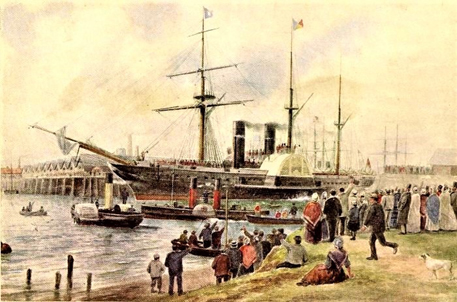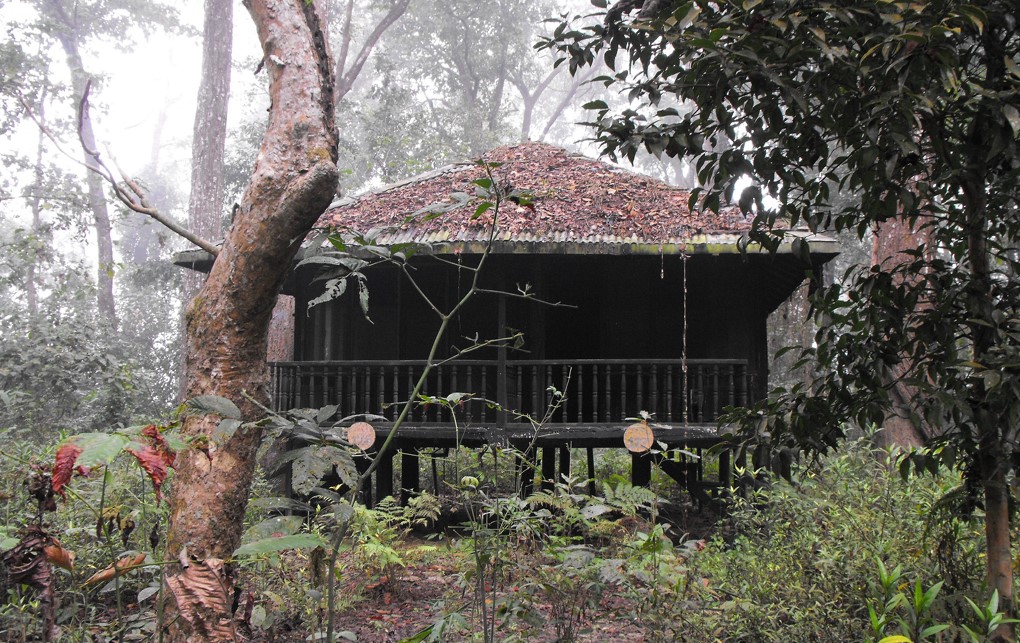
There was a time when Rani Pokhari made headline news if someone managed to commit suicide by jumping in while nobody was looking. In the 1970s, a well-known rock musician is said to have jumped in, only to swim out after changing his mind in the last minute. This spring there was so little water in the tank, that one would have to be quite imaginative to actually drown in it. Last month, Rani Pokhari was in the news once again. Only this time, because some well-meaning Buddhist ladies spent a considerable amount of money to have tankers pour large quantities of water into the tank to save the fishes. The water level had dropped dangerously low.
Rani Pokhari lies in the heart of the city, west of Ghanta Ghar and was built by a Malla Queen (Pratap Malla’s wife) in 1667 in memory of their son, Chakravartendra who died young. A temple dedicated to Shiva sits in the center of the tank. The original temple was replaced with the current one in 1908 during the Rana period. The central image is a Shiva lingam surrounded by four small shrines at each corner. The temple looks enchanting on a moonlit night especially with the ducks swimming peacefully in the dim light. The tank is surrounded by well-kept gardens and the fishes have survived.
Since the demolition of buildings at Ratna Park, the pond is now visible from all sides and one gets a clear view of the statue of an elephant carrying what is believed to be Pratap Malla’s family. Rani Pokhari remains closed most of the year, and the practice was to open it to the public once a year during Tihar. This was solely to let people who do not have sisters go in to receive tika. But of late, an annual festival is held here and lasts about a week. People are seen boating (on rubber rafts) while others enjoy various games in the temporary stalls put up for the occasion. Recently, we have seen many water tanks renovated and annual festivals are becoming the norm.











